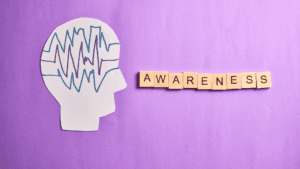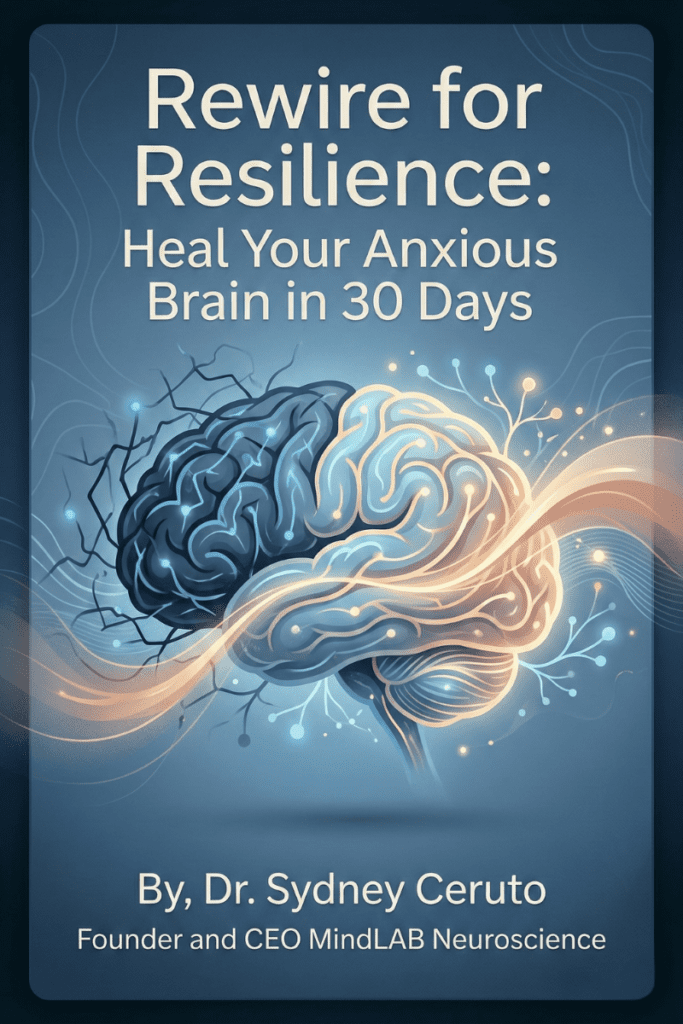What is emotional awareness? It is the capacity to recognize, identify, and understand your own emotions as well as those of others, forming the foundation for meaningful self-reflection and healthy social interactions. The different levels of emotional awareness range from noticing physical sensations or vague feelings to being able to pinpoint and articulate complex emotions in both yourself and others, ultimately enabling empathy and social wisdom. The neuroscience of emotional awareness is changing the way people understand, regulate, and relate to their inner lives. Unlike simple “emotional intelligence” tests, neuroscience of emotional awareness is built on decades of research into the brain’s emotional networks, the mechanics of self-reflection, and the evolution of human feeling.
When you explore the neuroscience of emotional awareness, you discover that recognizing, naming, and processing emotions is not just a soft skill—it’s a core feature of brain plasticity and personal growth. The concept extends far beyond simply knowing what you feel; it involves understanding how the amygdala, prefrontal cortex, and insula interact to shape your reactions, decisions, and emotional responses.
Leaders in the neuroscience of emotional awareness have shown that higher levels of self-understanding are linked with strengthened connections between the thinking and feeling regions of the brain. The result is emotional resilience, clarity under pressure, and better outcomes in relationships and work. Throughout human evolution, this capacity for emotional awareness set our species apart, giving us tools not just for survival, but for complex social bonds and innovative problem-solving.
What, biologically, is emotional awareness? The neuroscience of emotional awareness emphasizes the importance of interoception—your ability to perceive internal body signals, such as your heartbeat or gut reaction—which transmits emotional signals to the brain. Advanced imaging reveals that individuals who are emotionally aware activate networks associated with empathy, social prediction, and focused attention. Those with low emotional awareness often struggle with impulsivity, chronic stress, or difficulty connecting—demonstrating why the neuroscience of emotional awareness is foundational for mental health.
Neural Mechanisms: The Brain’s Emotional Architecture

The neuroscience of emotional awareness provides stunning clarity on how our brains process emotions. In daily life, emotions are first registered by subcortical structures (the thalamus and amygdala) and then routed to higher-order regions (the prefrontal cortex and anterior cingulate) for conscious evaluation. The neuroscience of emotional awareness reveals how primary emotions—such as fear, joy, anger, and disgust—trigger distinct neural circuits. In contrast, social emotions engage networks for perspective-taking and abstract thinking.
Emotion regulation is inextricably linked to the neuroscience of emotional awareness. When the prefrontal cortex is strong, it dampens impulsive amygdala reactions and helps you respond thoughtfully even when stress runs high. Individuals with advanced emotional awareness exhibit greater activation in the insula, a region associated with self-monitoring, empathy, and the ability to distinguish between their own and others’ emotions.
Research in the neuroscience of emotional awareness also finds that neuroplastic changes occur through intentional emotional focus—meaning every time someone practices naming an emotion or reflecting on its source, they strengthen brain pathways for resilience. This scientific validation encourages readers to view emotional skills not as innate gifts but as trainable capacities, with lifelong benefits.
Evolution’s Blueprint: Emotional Awareness Across History
Long before language emerged, our ancestors relied on social intelligence to navigate their environments and survive within their groups. In these ancient societies, the ability to pick up on subtle emotional cues—such as gestures, facial expressions, or changes in tone—often meant the difference between forming a supportive alliance and facing isolation or conflict. Archaeological and fossil evidence reinforces that the growth of social complexity required people to be highly attuned to one another’s feelings and intentions. This sensitivity helped small tribes build trust, settle disputes, and adapt to new challenges as their communities expanded.
Over time, the human brain developed regions specialized in managing feelings, self-reflection, and interpersonal understanding. This growth enabled increasingly sophisticated forms of empathy, impulse control, and emotional expression, which became essential for leadership and collaboration. From early childhood, people demonstrate this adaptability through an impressive ability to read the moods and reactions of those around them, laying the groundwork for healthy relationships and effective communication throughout life.
Today, social savvy remains a key advantage. Whether forming deep family bonds, leading teams, or engaging in creative partnerships, the ability to read emotions is essential for cultivating collaboration, resilience, and innovative problem-solving. As society continues to accelerate and change, these flexible emotional capacities ensure that humans thrive not only as individuals but as interconnected members of a complex global community.
Clinical Insights: A Case Study on Neuroscience of Emotional Awareness
Meet Carla, a client whose transformation through emotional awareness shook up every aspect of her life. When Carla began neuroscience-based coaching, she was stuck in a cycle of self-doubt, intense mood swings, and relationships that always seemed to spark chaos or leave her feeling unheard. Despite her intelligence and empathy, Carla struggled to articulate her actual needs—when conflict arose, her mind went blank, her voice trembled, and resentment simmered beneath the surface.
Instead of prescribing generic self-help, I used neuroscience-based personal development to rewire the emotional circuits driving Carla’s experience. We began with deep emotion labeling, inviting her to name not just anger or sadness, but the nuances underneath—disappointment, anticipation, shame, and relief. Brain-focused coaching taught Carla how her pounding heart, shallow breath, and tight chest signaled amygdala activation: a threat response she’d endured since childhood. She tracked these internal cues daily, using guided body scans and biofeedback techniques to calm her nervous system and engage her prefrontal cortex.
But the real breakthrough came during reflective story work. In one pivotal session, Carla recounted a heated argument with her partner. Instead of collapsing into silence, she paused, identified her emotions, and mapped the specific triggers: an old fear of betrayal, the ache of unspoken expectation. By integrating neuroscience of emotional awareness, Carla dismantled patterns of reactivity—she confronted her partner with clarity, compassion, and presence, opening a dialogue built on transparency rather than defensiveness.
Over several months, Carla became an expert in her mind-body connection. She mapped invisible emotional triggers, such as old wounds or power struggles, using journaling and voice recordings to capture her daily progress. Neuroplasticity was evident in her shifting relationships: where she once retreated or lashed out, Carla began setting boundaries with grace, expressing vulnerability without apology, and advocating for her well-being both at work and at home. Her confidence soared, stress faded, and moments of joy became a consistent rather than fleeting experience.
Crucially, neuroscience-driven coaching to establish a new romantic partnership founded on radical honesty and genuine mutual support. She negotiated tough conversations—career changes, intimacy fears, financial worries—without spiraling into panic or people-pleasing. Friends and colleagues noticed how she handled adversity with humor and poise, setting an example in emotional intelligence that spread through her networks.
Carla’s provocative journey demonstrates that emotional awareness is not merely a psychological luxury—it is a neuroscience-driven catalyst for lasting transformation. The science and coaching intertwined unlocked her capacity for self-regulation, self-respect, and deep connection. Her story demonstrates that brain-based personal development offers not only relief from emotional chaos but also a foundation for fulfillment, resilience, and thriving relationships in every aspect of life.
Micro Awareness: The Science of Subtle Emotional Shifts
The nuances of emotional awareness demonstrate that even fleeting changes—a hint of tension in a conversation, a flicker of amusement during a stressful day—can have outsized effects on brain chemistry and daily life. Neuroscientists now know that micro-expressions and subtle internal shifts, when noticed early, activate not only emotional circuits but also prefrontal regions responsible for planning and impulse control. This means that recognizing irritation before it escalates, or tuning in to gratitude as it arises, can lower stress reactivity and open space for intentional choices. The neuroscience of emotional awareness highlights that people who attune to these shifts build adaptive reserves, making it easier to handle setbacks with agility and optimism.
Practicing this skill also strengthens emotional insight, sharpening intuition and even boosting creativity by forging new neural links. Biologically, these micro-emotional shifts are managed by feedback loops between bodily sensations and cognitive appraisals. The insula receives rapid-fire updates about heart rate, breath, and tension, prompting higher centers to analyze and interpret what’s happening. Research shows that individuals who develop the habit of pausing and self-monitoring experience greater emotional flexibility, recover from adversity more quickly, and make more informed decisions in challenging environments. Over time, regular attention to these subtle signals in
Social Synchrony: Emotional Awareness in Relationships
Emotional synchrony—the effortless, often unconscious ability to tune in to another’s feelings—is fundamental in close relationships and high-performing teams. When people “catch” each other’s emotions through tone of voice, facial expressions, or even shared silence, their brains sync up, reflecting mutual respect and psychological safety. These aligned patterns, visible on neuroimaging, are evidence that the emotional brain is built for connection and social learning. Emotional awareness in a group context means more than just empathy; it involves being able to sense shifts in mood, read the room, and instinctively know when to offer support or space.
Couples and teams who master this create a culture where it’s safe to share vulnerability, address conflict, and turn tension into innovation. Notably, applying the neuroscience of emotional awareness in relationships helps dismantle misunderstandings before they become resentment, and fosters a contagious sense of trust and goodwill. Frequent check-ins, open-ended questions, and intentional curiosity about others’ inner states deepen social bonds and make collaboration both more creative and less fraught. Over time, these habits can transform not only the dynamics of a relationship but also the emotional health of entire families or organizations.
Interoception: The Brain-Body Link in Emotional Awareness
Interoception—the internal awareness of signals such as heart rate, gut feelings, and muscle tension—is the foundation for decoding and managing emotions. Neuroscience research reveals that individuals with highly developed interoceptive skills are better equipped to recognize early warning signs of stress or excitement before they manifest in words or actions. This type of embodied self-awareness supports emotional regulation, enabling people to consciously shift their focus, adjust their breathing, or find grounding when strong emotions arise.
By combining this “body sense” with reflection, individuals turn vague moods into clear signals for action or rest, helping to prevent burnout and promote mental wellness. People who practice attuning to their internal world—through mindful movement, breathwork, or meditation—find they’re less likely to be thrown off by external events because they have reliable internal cues for recalibration. Over time, strengthening this mind-body link fosters a powerful feedback loop: emotional mastery built not just on thought, but on experiential knowledge of how emotions manifest physically and what to do when they do.
The Role of Neuroplasticity: Training Emotional Awareness Daily

Neuroplasticity—the brain’s ability to adapt—lies at the core of the neuroscience of emotional awareness. Every moment spent identifying, processing, or exploring emotions refines neural networks and boosts cognitive flexibility. The neuroscience of emotional awareness teaches that daily practice matters: reflect after challenging discussions, write about difficult feelings, and review how your body responded in moments of stress or excitement.
Coaching in the neuroscience of emotional awareness often centers on growth-minded, incremental change. By tracking progress and recognizing improvements in self-reflection, clients unlock new reserves of confidence and adaptability. The neuroscience of emotional awareness assures readers that change is not just possible—it’s observable in the brain, validated by science, and sustainable for a lifetime.
Emotion Regulation: Mastering the Brain’s Response
Emotion regulation strategies supported by the neuroscience of emotional awareness include labeling feelings, pausing to reflect, reframing thoughts, and engaging in supportive dialogue. The prefrontal cortex manages these processes, helping you respond logically rather than impulsively. Regular application of the neuroscience of emotional awareness transforms relationships, diffuses conflict, and increases satisfaction.
For leaders, parents, and professionals, the neuroscience of emotional awareness means moving beyond “managing emotions” to embodying empathy, perspective, and adaptability. Systematic emotion regulation leads to better teamwork, healthier families, and more effective learning—every dimension of life improves when emotional awareness is cultivated intentionally.
Evolutionary Intelligence: Emotional Awareness as a Social Tool
The neuroscience of emotional awareness wasn’t simply designed for personal benefit; it’s a tool for shaping dynamic societies. Across cultures and millennia, emotional awareness has strengthened groups facing hardship, fueled conflict resolution, and powered collective action. Brains attuned to social nuance can negotiate alliances, build lasting trust, and resolve disagreements without violence.
The neuroscience of emotional awareness encourages modern readers to be cultural architects—modeling open emotional reflection, supporting others in developing self-awareness, and creating communities where emotional safety is paramount. This science-based skill is rapidly becoming a differentiator in organizations, schools, and families seeking resilience and growth.
Sociological Narratives: Global Trends in Emotional Awareness
Recently, the neuroscience of emotional awareness has influenced social trends from mental health advocacy to business leadership. Younger generations, raised with an emphasis on emotional literacy, report lower stigma surrounding feelings and greater motivation for positive change. As workplaces embrace the neuroscience of emotional awareness, employee engagement, productivity, and retention all improve.
From grassroots organizations to multinational companies, the neuroscience of emotional awareness is redefining what it means to lead, collaborate, and belong. Social media campaigns, podcasts, and coaching platforms champion emotional awareness not as an end in itself, but as a daily practice for wholeness.
Daily Integration: Building Your Neuroscience of Emotional Awareness Toolkit
To harness the neuroscience of emotional awareness, build simple routines:
- Start each day by checking in with your emotions, labeling them explicitly.
- Practice daily body scans, noticing tension and breath.
- Journal about emotional triggers, linking bodily sensations to brain reactions.
- Share emotional check-ins with trusted peers or partners, inviting them to offer feedback and compassion.
- Seek coaching, mentorship, or training focused on the neuroscience of emotional awareness, with real case studies and evidence-based approaches.
As skills increase, notice how your responses to stress change, how relationships become more secure, and how your sense of self deepens. The neuroscience of emotional awareness gives every reader the tools to thrive.
The Future: Emotional Awareness in Leadership and Innovation

The neuroscience of emotional awareness is fast becoming foundational in executive coaching, education, healthcare, and technology. Leaders trained in emotional awareness innovate more effectively, resolve conflict decisively, and inspire genuine loyalty. Teachers who master the neuroscience of emotional awareness cultivate stronger classroom cultures, enabling students to develop lifelong resilience.
Expect the neuroscience of emotional awareness to revolutionize therapy, performance training, and even artificial intelligence—emotionally aware machines can one day support human flourishing. This frontier promises tools for personalized emotional coaching, accessible self-awareness platforms, and integrative, holistic guides for well-being.
Ultimate Impact: Living the Neuroscience of Emotional Awareness
In every aspect of life, the neuroscience of emotional awareness is unlocking brain-based self-understanding, actionable intelligence, and resilient relationships. From evolutionary roots to clinical case studies, from social innovation to personal transformation, this science illuminates a path toward lasting emotional freedom, fulfillment, and growth.
Embrace the neuroscience of emotional awareness in your coaching, relationships, and daily self-care to experience profound change—inside and out. The benefits of emotional awareness extend far beyond mood improvement—they include more transparent decision-making, more resilient responses to adversity, healthier connections, and a deepened sense of well-being and purpose.
#neuroscienceofemotionalawareness #emotionalawareness #neuroscience #selfawareness #brainhealth #coaching #transformation #wellbeing #emotionregulation #personaldevelopment





